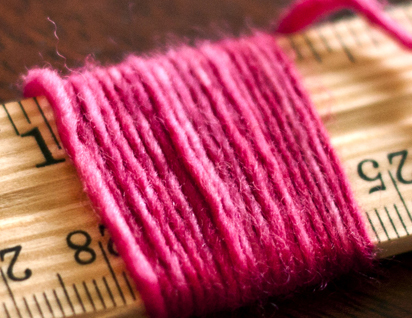Windschief by Stephen West is one of my favorite hat patterns; it works easily for both men and women, and it’s fun and quick to knit, making it a great pattern for last minute gifts. The pattern also includes instructions to create a matching cowl, making the pattern even more valuable. The pattern features ribbing on one fourth of the pattern, with the rest being stockinette. I created our sample out of Norwegian Elkhound in Muddy Paws.
The pattern starts out with 1:1 ribbing, then goes into the stockinette on the rest of the hat, with the ribbing from the brim continuing up and angling with increases and decreases. This is a pattern that is easily memorized, and uses measurements rather than row counts to determine when to continue on to the next section, which makes it forgiving for different yarns and gauges. The main difference between the cowl and the hat is how the bind off is handled; with the hat, there are decreases until 8 stitches remain, whereas the cowl has ribbing to mirror the beginning of the pattern.
I’ve made this hat 3 times now, once with my first colored handspun yarn and twice with Norwegian Elkhound, and I am still in love with the pattern. There are three sizes available in the pattern, and the pattern is available in English, Japanese, and German. Find this pattern here!
This was the first time I had knit with any of my handspun, and it's my favorite hat!
This hat is also out of Norwegian Elkhound, in Bark Mitzvah.















